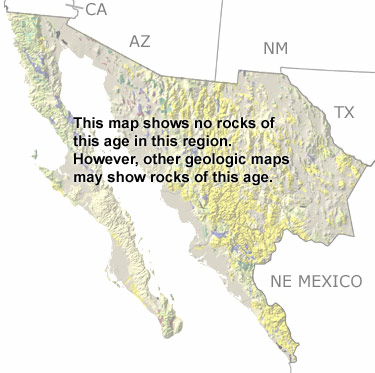

The Permian in Northwest region, Mexico |
|||||||||||||||||||||||||||||||||||||||||||||||||||||||||||
|
|||||||||||||||||||||||||||||||||||||||||||||||||||||||||||
Paleontology and geologyIn the Permian, Laurentia and Gondwana continued to collide in the east, forming the supercontinent Pangea, and Northwestern Mexico experienced tectonic activity possibly related to this collision. Parts of this region were pushed up and exposed above sea level, while others dropped down into basins. In some areas, deeper deposits of shales, cherts, and mudstones were thrust over shallower limestones and sandstones, while other areas seemed to be unaffected. The seas were full of many different animals, including ammonites, corals, brachiopods, sponges, conodonts, foraminifera, gastropods, bryozoans, and crinoids, some of which built up reefs in shallow areas. Fossils of these animals are preserved in some of the Permian rocks, although many rocks from this period have been altered, were removed by erosion, or are buried below the surface. The few remaining exposures are too small to appear on this map, but some may be included in the undifferentiated Paleozoic rocks. Other more detailed maps may also show them. Geologists continue to study these rocks to unravel their complicated geologic history. |
|||||||||||||||||||||||||||||||||||||||||||||||||||||||||||
|
|
|||||||||||||||||||||||||||||||||||||||||||||||||||||||||||
|
site tour |
about the site |
site map |
site credits |
page credits |
help |
FAQs |
contact |
||


